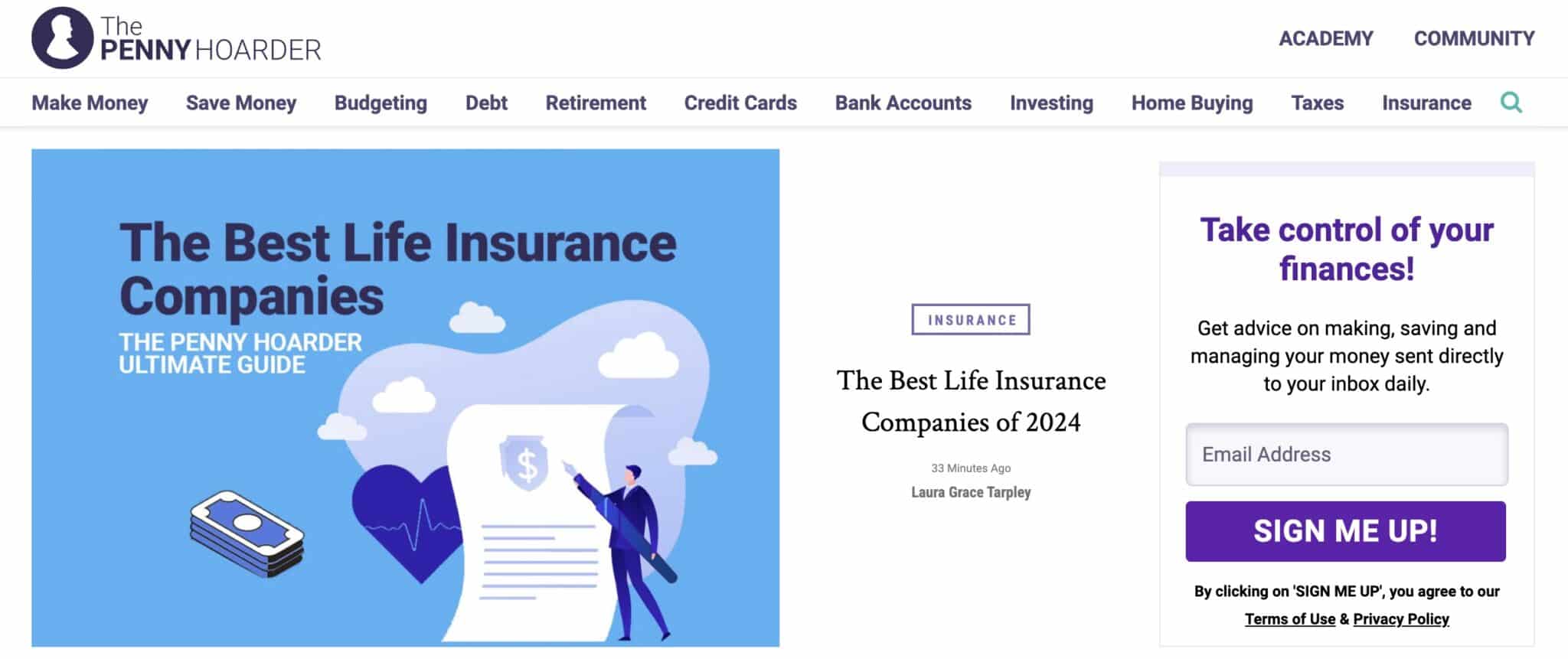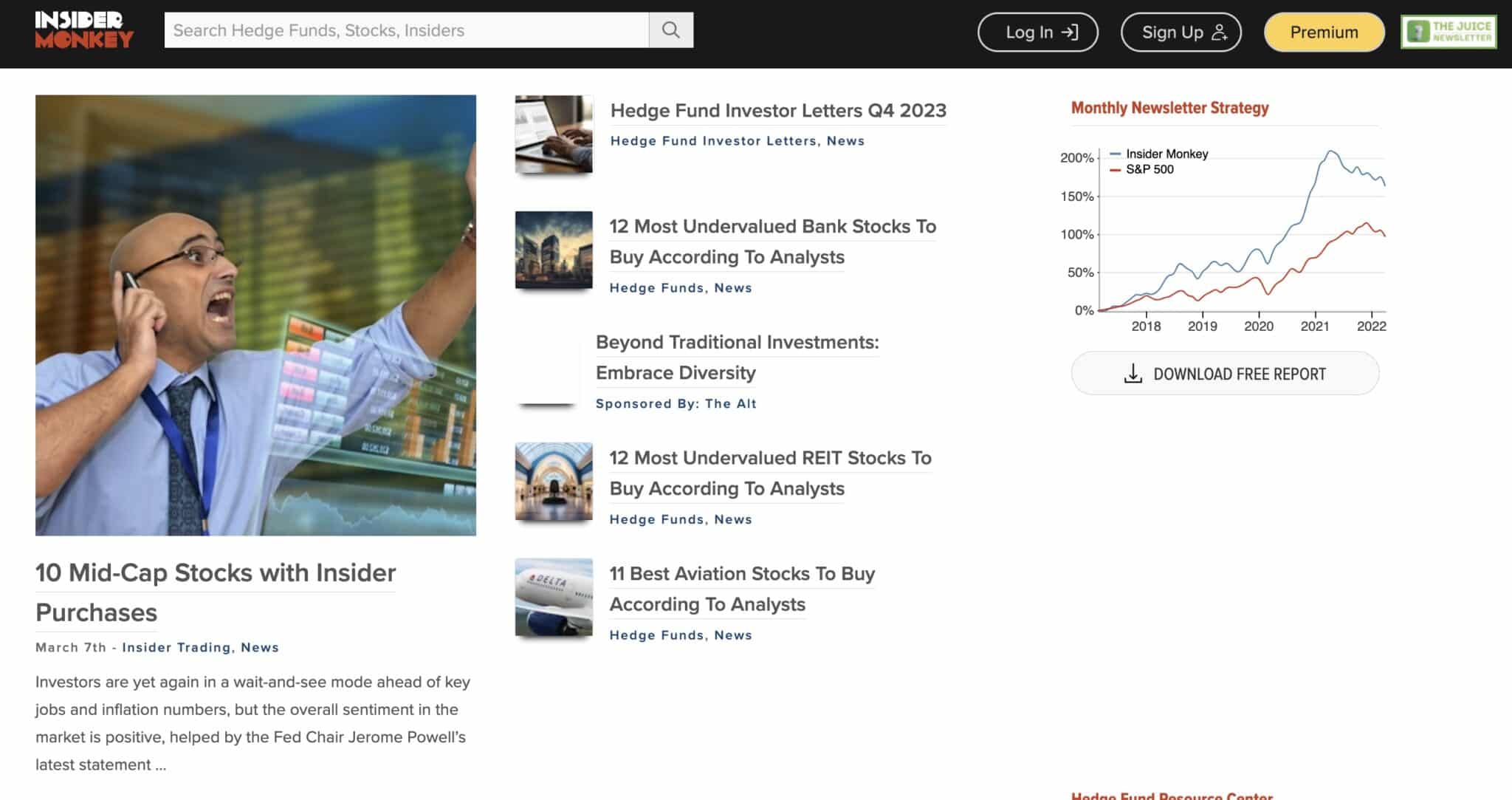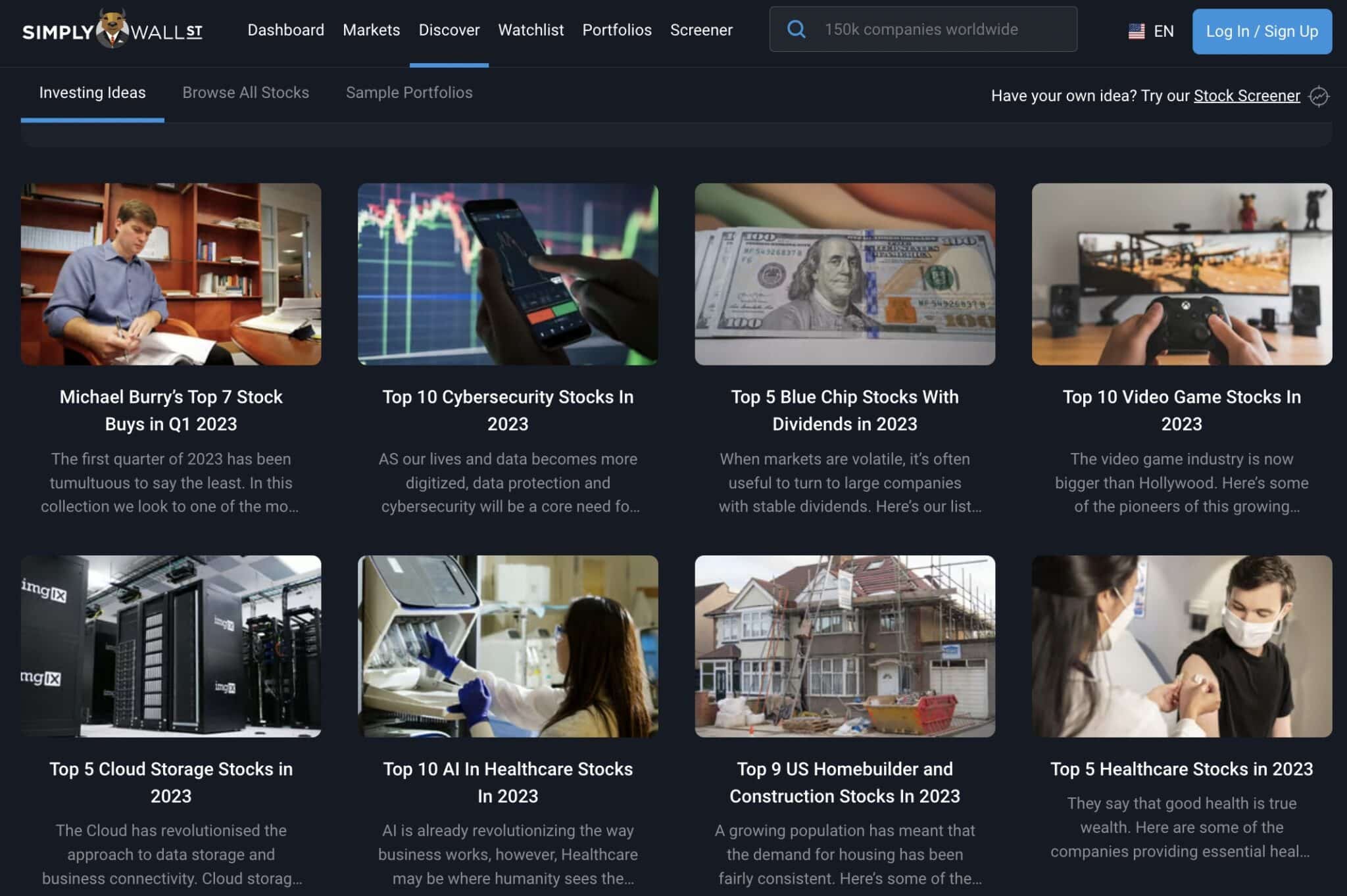Starting a finance blog is like opening a door to a world of financial knowledge and empowerment. It’s your chance to make money matters less confusing, share smart tips, and help others manage their money better.
Whether you’re a finance whiz or just love talking about money, a finance blog lets you connect with folks who want to improve their finances. You can cover topics such as budgeting, saving, investing, and more—all without getting too complicated.
However, to build a successful blog, you need to write content your market finds valuable, position yourself as an expert in your field, and find exciting topics people want to read about.
We know how challenging all these can be, so we created this guide to help you.
Below, we take you through the critical steps to starting a finance blog. By the end of this article, you will have all the knowledge you need for this new venture.
Table of Contents
Why Start a Finance Blog?
Here are some good reasons to start a finance blog:
-
Make Money: You can earn cash by promoting financial products, selling courses, or offering coaching. As your traffic grows, you can also make money through ads and sponsored content.
-
High Earning Potential: On average, finance blogs make about $9,296 per month, according to a survey by Authority Hacker. That’s a lot because finance content is valuable and popular.
-
Become an Authority: Blogging can help you become an expert in finance and connect you with other finance professionals, which could lead to better job opportunities and chances to speak publicly.
-
Community Building: You can bring people together who share an interest in finance and help each other make smarter money choices.
- Build Trust: If you’re in finance professionally, offering valuable advice online can earn trust from potential clients, showing them you’re a reliable expert.
How to Start a Finance Blog in 8 Steps
1. Narrow Down Your Finance Niche
Choosing the right topic for your finance blog is important. It helps you focus on a specific audience and show off your expertise in a particular area of finance.
To really succeed, you need to narrow down your focus.
Trying to compete with big finance blogs without a niche is tough. But when you specialize, you can become an expert and build trust with your readers.
Imagine you’re searching for debt payoff tips. Who would you trust more?
- A) Someone who’s tackled debt themselves and talks about it a lot on their blog.
- B) A general finance blog that covers lots of topics but only briefly mentions debt.
Most likely, you’d pick option A because they know their stuff.
Specializing builds trust because people know you get where they’re coming from.
There are lots of sub-niches you can choose in personal finance, like:
- Budgeting for Families: Tips on budgeting, saving for school, and planning for big life moments like buying a house.
- Personal Finance for Millennials: Dealing with millennial money issues like student loans and buying a home.
- Finance for Entrepreneurs: Ideas for startups, getting funding, and guides for starting a business.
- Sustainable and Ethical Investing: Investing in ways that are good for the planet and society.
- Credit Cards: Using credit cards wisely, building credit, earning rewards, and reviewing different cards.
When you pick a niche, Google gets what your blog is about, making it easier to rank higher in search results.
Higher rankings mean more free traffic, which can mean more money for you.
Having a clear niche also helps you understand your audience better. That way, you can market affiliate products or sell your own stuff more effectively.
Many finance bloggers share their own stories, but you don’t have to. What matters most is that you can give solid advice, whether you’ve experienced it yourself or not.
Your blog should be all about solving people’s problems, whether it’s getting rid of debt, building an emergency fund, or anything else.
2. Pick a Blogging Platform
When you decide on a finance topic for your blog, you’ll need to pick a place to put it online.
A blogging platform is like a tool on the internet that helps you put out your writing without needing to be a tech expert.
There are some free options out there, like Medium or Blogger, where you can publish your blog. But there are some downsides to using them:
- It’s harder to make money.
- You don’t have much say in how your blog looks or works.
- They have strict rules about what you can write.
If you want more control and the ability to make money from your blog, starting your own website is the way to go.
When picking a blogging platform, go for one that includes hosting and 24/7 security.
Built-in hosting means you won’t have to find separate hosting services. This saves you time and makes sure your blog runs smoothly.
Apart from that, look for a platform that matches your design preferences. The way your blog looks affects how people use it. Choose a platform with layouts and customization options that fit your branding.
WordPress is the top choice, but there are other options too. You can check out my step-by-step guide on starting a WordPress blog.
You can also check out some alternatives if you want.
Once you’ve picked your platform, you can start giving your site its own identity by choosing a domain name.
3. Choose Your Domain Name
A domain name is like your website’s home address, and it’s important because it’s the first thing people see and remember about your site. Here’s how to choose a good one:
-
Reflect Your Niche: Make sure your domain name fits what your blog is about. For instance, if you’re writing about saving money in college, something like dormdime.com could work well.
-
Consider Your Tone: Think about how serious or fun your topic is. For a light-hearted blog, a playful name is fine. But for something serious like financial advice for bankruptcy, you’ll want a name that sounds trustworthy, like expertdebtcounsel.com.
-
Go for .com: Stick with the .com extension if you can. It’s more common and trusted than other options.
-
Keep it Simple: Choose a short and easy-to-spell name. This makes it easier for people to remember and find your site. Try to stick to three words or fewer. Keep your blog and domain names consistent to avoid confusion and strengthen your brand.
-
Check Trademarks: Make sure the name you want isn’t already trademarked. You can use a trademark search tool to check.
If you’re stuck for ideas, try using a blog name generator. These tools suggest names based on keywords related to finance, helping you find a unique and catchy name that fits your blog’s theme.
Here are some examples of finance blog names:
- WealthWaveInsights.com
- BudgetBuddyBlog.com
- InvestSmartHub.com
- CashFlowCraze.com
- FrugalFinanceFacts.com
- DollarSenseSavvy.com
- ThriftyTreasureTips.com
If the .com version of your desired domain name isn’t available, there are other options like .net or .org.
Finally, buying a domain is usually cheap, around $10 per year on sites like Namecheap.
4. Sign Up for Web Hosting
Once you’ve sorted out your domain, it’s time to choose a web hosting platform.
Web hosting is like renting space on the internet to store your website and make it accessible to everyone.
While there are free hosting options available, such as Weebly’s free plan, there’s a drawback. You won’t have your own web address like mypersonalfinanceblog.com. Instead, it might look something like mypersonalfinanceblog.weebly.com. Not very professional, huh?
If you’re serious about making money with your blog, opt for a paid hosting plan. I recommend Bluehost. It’s affordable, starting at just $3.95 a month.
However, their customer service can sometimes be slow. If that’s important to you, consider Siteground. They offer fast site speed and high security levels, along with top-notch customer support. It’ll cost you a bit more though, starting at $6.99 a month.
Here’s how to get your web hosting sorted in a few steps:
- Head to SiteGround’s WordPress hosting page.
- Pick the cheapest option – the StartUp plan. It has all the basics for a new blog.
- If you already have a domain, just type it in. If you didn’t have one yet, you can buy one there.
- Fill in your details.
- Add your payment info and choose how long you want to subscribe for. Usually, a year gives you the best deal.
- Skip any extras – you don’t need them for a new blog.
- If you got your domain from Namecheap or somewhere else, you’ll need to change some settings so it points to SiteGround. Their support team can help if you’re stuck.
5. Select a Theme and Design Your Site
Now let’s talk about picking a theme and designing your site. Think of it as the blueprint that determines how your blog will look and feel. It’s important to match your theme to your finance niche to attract the right audience.
For instance, if you’re all about investment strategies, a professional and clean design might be the way to go. But if you’re more into personal finance, a warmer, friendlier theme could work better.
WordPress has tons of themes, both free and paid, for your blog. Free themes are great if you’re on a budget. They’re easy to use and can make your site look good without spending a dime.
But, they do have their limits. You might not be able to customize them as much as you want, and they might not be super fast. As your blog grows, you might want to upgrade for more features.
Look for themes that load fast, work well on different devices, and are easy to customize. Also, check out reviews and customer support options.
Some good “freemium” themes to consider are GeneratePress, Astra, and Kadence. They come with ready-made templates, which can save you a ton of time.
Once you’ve chosen your theme, here’s how to add it to your WordPress site:
- Go to your WordPress dashboard.
- Click on “Appearance” in the sidebar.
- Select “Themes.”
- Hit “Add New.”
- Use the search bar to find your theme and click “Activate.”
That’s it! Now you can start personalizing your site to make it your own.
6. Add Essential Pages
Before you start writing a blog post, you need to have some important pages in place, including:
-
Homepage: This is like the welcome mat for your website. It tells visitors what your site is all about and helps them find what they need easily. A good homepage makes people want to explore more.
-
About Page: Here, you can tell your audience why you started your finance blog and what you hope to achieve with it. Sharing personal stories and your background in finance, along with a picture, can help build trust and make a connection with your readers.
-
Contact Page: This is where people can reach out to you. It’s important for inquiries, collaborations, and feedback. Keep it simple with a contact form, email address, and links to your finance social media accounts.
-
Privacy Policy + Terms & Conditions Pages: These are legal pages that protect both you and your visitors. They explain how you collect and use information on your site. You can easily create these pages using tools like PrivacyPolicies.com.
It’s easy to create these pages. Just log into your WordPress dashboard, go to the “Pages” menu, and click “Add New.” Then you can start filling in the content for each page.
For personal finance blogs, legal pages are especially important. They clarify that while you may offer financial advice, you’re not acting as a personal financial advisor. That way, you can safeguard yourself from any legal liabilities for readers’ financial decisions.
While you can find free templates online, I recommend Amira’s legal templates from A Self Guru. They’re easy to customize and provide comprehensive protection for your blog. Simply add your name and blog details to the templates and upload them to your site.
7. Write Content For Your Finance Blog
Now that your blog and website are all set up, it’s time to start writing your first blog posts!
Start with cornerstone content, which are in-depth, comprehensive posts that are crucial for your niche.
For example, if your blog is about stock investing, consider writing “The Ultimate Guide to Investing in Stocks”. Or if you’re focusing on cryptocurrencies, you could begin with “The Beginner’s Guide to Buying Cryptos”.
It’s helpful to do some keyword research at this stage. It allows you to write about topics that people are actively searching for.
However, it’s challenging to target popular keywords for a new website. I’d suggest you to look for keywords that are less competitive but still get lots of searches each month. A tool like Ahrefs can help you find these keywords.
When you’re ready to write, follow these tips to make your blog posts engaging and optimized for search engines:
- Know what you want your readers to learn from your post before you start writing.
- Stick to the topic related to the keywords you’ve chosen to improve your chances of ranking high in search results.
- Think about who will be reading your post and explain any complicated terms or concepts.
- Use real-life stories and examples to make your content relatable and trustworthy.
- Link to other relevant posts on your blog to keep readers interested and improve your SEO.
- Use credible sources to back up any facts or figures you mention.
- Stay up-to-date with the latest trends and news in finance to keep your content fresh.
When writing your blog posts, remember to organize them with a clear introduction, main body, and conclusion (if needed). Use headings and subheadings to divide your content. The exact format you choose is up to you, just keep it consistent across all your articles.
Include relevant images, graphs, charts, and infographics to make financial concepts easier to understand visually. Consider embedding videos that explain concepts, share market insights, or provide tutorials for a more comprehensive learning experience.
Before publishing, create a checklist to make sure you’ve proofread for grammar, spelling, and punctuation errors. Double-check the accuracy of any data and statistics you include, as well as the images.
Here are some finance blog article ideas to inspire you as you get started with your blog:
- “5 Easy Ways to Save Money Each Month”
- “Understanding the Basics of Credit Scores”
- “The Importance of Emergency Funds: Why You Need One and How to Start”
- “How to Pay Off Debt: Strategies for Becoming Debt-Free”
- “Top 10 Money-Saving Tips for Millennials”
- “Exploring Different Retirement Savings Options: IRA vs. 401(k)”
- “Common Financial Mistakes to Avoid in Your 20s and 30s”
8. Monetize Your Blog
To make money from your finance blog, focus on giving your readers helpful financial info. Be transparent about affiliate links or product promotions.
For long-term success, you should diversify your income sources to avoid depending on one.
Here’s how you can earn money with your blog:
-
Affiliate Marketing: Partner with financial companies. Share their products using special links. You get paid when people buy through your links. For example, you can review financial tools and share links to them. For more info, you can check out my guide on affiliate marketing.
-
Display Ads: Add display ads from Google AdSense to your blog. Every time someone clicks or sees an ad on your site, you earn money. But make sure ads don’t overload your blog for a better user experience. To increase your ad revenue, you can join an ad network like Ezoic. Later, you can switch to Mediavine or Raptive for more earnings once you have met their requirements on monthly traffic.
-
Sell Digital Products: You can create and sell digital products related to finance, such as advanced investment guides, detailed tax strategies, or a stock trading course. Just figure out what your audience needs. Then, you can use platforms like Teachable for courses or set up a store on your website using WooCommerce.
Examples of Popular Finance Blogs
If you need more inspiration, check out the following finance blogs:
1. The Penny Hoarder

The Penny Hoarder is a place where you can learn about making, managing, and saving money. It’s mainly for people who don’t earn a lot. They create about 20 articles every week covering different money topics.
2. Insider Monkey

Insider Monkey, created by Dr. Ian Dogan in 2003, is all about financial news and opinions. They talk about stuff like insider trading and hedge funds. Their goal is to share Dr. Dogan’s smart methods with everyday investors who don’t have fancy research tools.
3. The College Investor

The College Investor helps young adults and college students with things like paying off student loans, managing money, and making smart investments. They want to teach beginners about money and encourage them to start early. Their website has tips and info to help you reach your financial goals.
4. Simply Wall Street

At Simply Wall Street, the team digs deep to give you honest news about global stocks. They use a helpful tool called “Snowflake” analysis to show how healthy a company is and how much it could grow. It looks at factors such as debt, earnings, and intrinsic value. They have over 5 million users on their website.
Final Words
While starting a finance blog takes time and dedication, it’s a lucrative niche.
With the increasing interest in financial literacy, you can share your expertise, gain followers, and earn a substantial income.
In this article, we’ve discussed important steps for starting a finance blog, but there’s still much more to learn.
As an experienced blogger, I understand the many challenges you might face on the path to building a successful blog.”
If you need more guidance, sign up for my online business coaching.

Jeff Smith, Founder of High Income Source, is an online business coach with a BBA in Marketing and Entrepreneurship from the University of Pennsylvania. His online business coaching program is so popular that more than 100 students have benefited and started successful online businesses under his guidance.
Jeff started dabbling in online business while he was in college, where he began with dropshipping. After college, Jeff worked at a marketing agency and freelanced as a writer. His breakthrough came when he realized the potential of blogging, leading to a $100,000 sale of a dog-focused website. His expertise includes SEO, affiliate marketing, Amazon FBA, blogging and dropshipping.